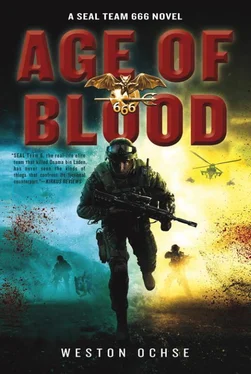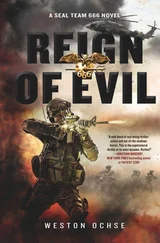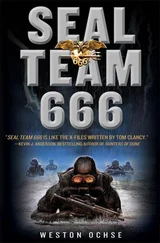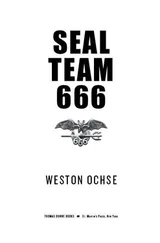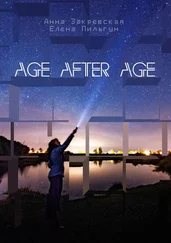But YaYa was thinking of none of this as he stared at the horizon. Instead, he was listening to voices in languages he shouldn’t be able to understand. Earlier, when he’d been in the pharmacy, he’d become vaguely aware that every now and then he could catch the reflection of something that couldn’t be there—a broken and twisted figure, legs like a grasshopper’s attached to his forearm; it had a triangular-shaped face with vaguely human features and stared back at him with glowing eyes above a drooling, misshapen mouth that was always moving. If he listened closely enough, YaYa could hear what it said. If he listened even closer, he could understand it.
After the sun set, YaYa returned to the SUV and rode slowly down Manhattan Beach. Three-story homes and a sidewalk were on his left. Parking spaces, a wide strip of beach, and the Pacific Ocean were on his right. Surfers were enjoying the last few sets and would be returning to their cars. They’d probably stop for a burger at Fatburger over on Artesia, or for a pizza at California Pizza Kitchen over on Sepulveda on their way home. They might even stay and build a bonfire. The life of a Southern California surfer was a special one, and it was something he counted on.
And there it was.
YaYa pulled the SUV into a slot beside an old 1973 Chevy Impala. Far from showroom shape, this car had been beaten and crashed so many times that the sky-blue sides appeared as if they were made of Bondo and undulated like the sea. He got out of the SUV and looked toward the Impala’s front tire. Sure enough, what he’d thought he’d seen was there. A set of keys. After all, no self-respecting car thief would steal this beater. He examined the pod of surfers out in the water waiting for waves and saw that the beach was clear. All he had to do was be fast enough.
He grabbed the keys and opened the trunk. Inside was a spare tire and a case of beer. He removed the tire and beer and placed these behind the SUV. Then he opened the back of the SUV and grabbed Alice, who was just now coming to. He dropped her into the trunk and checked the tightness of her cuffs. He pulled several plastic cable ties from his pocket and cinched her ankles together, then attached the cuffs to the ties on her ankles. As he was adjusting her gag, she opened her eyes. He punched her three times, quick, then slammed the trunk.
He spied several surfers angling for a wave. Another was staring right at him and shouting something. YaYa gave the man a quick salute, got into the Impala, and started it. “Paint It Black” blasted from the speakers as he backed out of the space. He had half a tank. In a boat like this, it might get him halfway to San Diego.
Part of him wondered if Alice would be okay.
Part of him didn’t care.
He drove away, careful to stay within the law. As he passed the SUV, he engaged its lock using the fob. A block later, he tossed the fob into the bushes.
“What’d you say?” he angled his head and began to listen to the voices as they told him what they wanted him to do.
CABO SAN LUCAS. MORNING.
They waited until morning to pull into port. Holmes had called and asked Billings if the video had been evaluated. Then at three in the morning she’d called him back. Much chastised, the SPG credited whoever made the video with superior talent. They’d done a cursory pixel check when they’d received it, but didn’t determine any pixel shift and believed it to be genuine. Additionally, the fact that it had come from a remote security camera added to their sense that the video was real. They had no protocol for deciding which videos should be evaluated or not, and had instead counted on the tasking element to ask them for evaluations. In this case, it should have come from Triple Six. Because one wasn’t asked for, one wasn’t conducted.
As it turned out, the video was a fake. Color filter array correlations in the area where Emily was supposed to have been taken by the creature were disrupted and showed significant lack of color spectrum pixellation. Bottom line was that although SPG was unable to as yet break through the concealment algorithm, no one could accurately state what had happened to Emily. But what they could say with a high degree of certainty was that she was not taken by a giant sea monster. Which left several questions. Why choose a sea monster? Why manipulate the video in the first place? And why choose as a sea monster an impossibly giant axolotl?
Even without the answers, Billings was able to garner full support from the CIA. Through SPG, she coordinated ground support through the U.S. Embassy in Mexico City. One of their assets would be in contact—ex–Zetas cartel hit man turned U.S. counter-narcoterrorism operative. He was due to meet with them sometime later that morning. Holmes had arranged for them to stay at a hotel downtown, one used by Mexicans rather than moneyed tourists.
Holmes was now certain, as was the rest of the team, including J.J., that Emily was alive. After all, why take so much effort to hide an abduction unless care was going to be made to keep the person alive. That there had been no ransom was worrisome. That someone tried to hide the fact she was even kidnapped was even more worrisome. Triple Six had to get to the bottom of this. Without any solid leads, their only option was to grab as many local bad guys as possible and interrogate them. Someone had to know something. Mexico’s subculture thrived on graft. Money had to pass from one hand to another for someone to have been able to get away with kidnapping in the area and it was Triple Six’s job to discover who it was.
Hotel Boutique Casa Poblito on Hidalgo Avenue was their accommodation of choice. It was a square one-story hotel with a single entry and exit point with a gate that could be locked. Each room had a window air-conditioning unit. The center courtyard had a pool and a large cabana. It had twenty-four rooms, eighteen of which were rented until this morning. By noon, everyone would be out and Triple Six would have the place to themselves.
Holmes also coordinated with an old friend, Major Navarre of the Grupo Aeromóvil de Fuerzas Especiales, or GAFE, which was the Mexican Special Forces. He didn’t require GAFE’s assistance, but he wanted his friend to know that they were in country and that they were conducting a covert operation, in the event local police or even federal police became involved. Navarre would create documentation that they were conducting a joint special-operations exercise, so if needed, the paperwork could be immediately produced. If it turned out they didn’t need the backup, then the documents would be destroyed. Plus it was just good planning to have a team of Mexican Special Forces on standby, even if you were SEAL Team 666.
J.J. took them to a late breakfast, loudly announcing that his companions had been charter fishing with him and had caught their weight in dorado and crevalle. They ate chilaquiles and eggs, which were nothing more than eggs served over tortilla chips, in this case with chorizo, queso fresco , and black beans.
After confirming that the hotel was available, they bag-dragged eight blocks and entered through the central door. Holmes passed a stack of money into the hands of the owner, and with one last glance, the owner hurried into the street. They had the hotel for three days, at which time they could extend their residency if needed. And the owner didn’t mind. After all, he’d been paid three times the rate on every room. A dump like this probably hadn’t been full in years, much less drawing the kind of customers who paid regularly.
“Walker and Yank, clear the rooms,” Holmes commanded. Turning to Laws, he said, “Establish coms and check out the electronics.” To J.J. he handed a placard that read QUARANTINE in Spanish, and a padlock. “Seal the front, then check the businesses around here and find out who the cops are who patrol this area. We want to make friendly with them.” He passed over a smaller stack of Benjamins. “Let me know if you need more.”
Читать дальше
